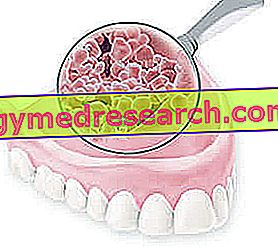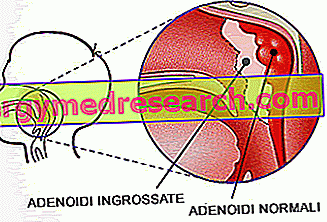By Doctor. Gianluca Rizzo - Nutritionist
Introduction
The scientific and commercial interest in probiotics has followed an exponential curve in the last decade, with a number of publications on PubMed of over 10, 000 units (June 2013). Isolation techniques and in vitro and in vivo research have allowed us to gather more and more information on the functionalities and mechanisms of microbial systems associated with humans.

Since the early twentieth century, the concept of probiotic has entered scientific terminology thanks to the studies of the Russian biologist Ilja Il'ič Mečnikov, who isolated and studied the strains responsible for the fermentation of milk in yogurt, used since that time as a starter for production processes that would have marked the genesis of the modern dairy industry. In a century of scientific progress, a major push in the functional use of these microorganisms has taken place thanks to the knowledge of the microbiota associated with human tissues and the interactions between these microorganisms and the functions of the body districts, real ecological niches that they have suffered with the first a real co-evolution.
The intestinal microbial system was the most studied and still represents the main target of probiotic supplements and functional studies for the purposes of human well-being. Despite this, there are numerous other microbial populations that interact with human tissues, with specific characteristics and specific microbial patterns. We know, in fact, that throughout the digestive canal there are variations in microbial populations, with the replacement of aerobic microbes with other anaerobic microbes from the oral cavity to the anal opening, a more evident but not unique variation that can be found . Each of these ecological niches is formed starting from the interaction with the guest and with the other guests of the same district. Along the digestive tract some microgranismi will benefit from the food slag of the host that will be fermented for energy purposes, whose by-products will in turn be used by other microorganisms as fermentative substrates; the host, in turn, will benefit from functional advantages on the part of the tissues involved (such as coloncites that feed mainly on the by-products of bacterial fermentation), but also on systemic and immune types . In a similar context, the heterogeneity of the district ecosystem allows the growth of those microbes that are beneficial for the host but also for the respective subpopulations, in a symbiotic phenomenon. For some researchers, these mechanisms lead to defining the human being as an entity formed by an amalgam of Homo sapiens and microbes rather than a single and unique species, and it has been established that the absence of an intestinal microbiota leads to reduced extraction capacity caloric from foods but above all serious inflammatory and autoimmune dysfunctions.
The interaction between these microgranisms and the tissues of the host seems therefore to be fundamental for maintaining the functionality of the organs and tissues with which they are associated; at the same time, many pathologies are frequently linked to alterations in the bacterial composition of the microbiota. In some cases these variations can be easily traced (changes in intestinal microbiota and diseases associated with bowel function), but sometimes these connections are not so immediate (metabolic syndrome and microbial alterations).
Oral bacterial flora and Probiotic Potentials
The interest in microbial systems has recently extended to other districts and there are scientific data that suggest that oral health is closely linked to microbial composition and how some diseases, such as diabetes mellitus, are associated with alterations of the buccal microbiota.
Despite these data, the intervention studies in the bibliography, concerning the use of probiotics, mainly use those strains notoriously used for achieving and maintaining intestinal health (Lactobacilli, Bifidobacteria, Streptococci) but, as we have seen, the two Microbial systems (mouth and intestines) can present numerous variations, as well as numerous strains (about one third of oral bacteria), are exclusive to the back of the tongue and not found in other oral compartments. There are still very few studies that have dealt with the effects of indigenous oral strains on pathogens involved in oral disorders, and among these strains we can include the strains of L. reuteri ATCC PTA 5289 and ATCC 55730, isolated respectively from the saliva of a Japanese woman and from the milk of a Peruvian woman.
Of course there are bacterial strains found in two different districts such as L. plantarum and L. rhamnosus strains found in both the anal and rectal mucosa, but it is said that they do not behave as residents in both. Similarly, an orally introduced microbe could be transient at the buccal level and remain longer in a given intestinal district; on the other hand, another could reside in the oral cavity and not reach the intestine or flow quickly. Precisely for this reason, the adhesion tests can be a useful starting point for the choice of probiotics to be used for the oral cavity; currently we know more than 1, 000 different species of microorganisms capable of colonizing the human mouth with unique patterns from one individual to another.
The ability to produce biofilm also becomes a necessary prerogative for colonization by a specific micro-organism and this characteristic depends largely on the interactions it is able to contract with the micro-organisms present in that district. The formation of a stable microbiota appears to occur through a complex chronology that progressively allows the establishment of the conditions necessary for the colonization of definitive microorganisms. These events mean that only in rare cases can a microbiota be so deeply disturbed as to be irreversibly altered. The biofilm, unlike the planktonic state, allows the specific expression of genes that increase the resistance and adhesion of microgranisms in an advantageous cooperation with other diners. Typically a biofilm is composed of different microbial species in a matrix generally of a glycoprotein nature, synthesized by the same microgramisms, which confers greater resistance to chemical-physical and biological agents. The consistency and composition of saliva play an important role in the colonization process and in maintaining the eubiotic balance through bacteriostatic and bactericidal properties found in it, as well as the mechanical effect of propagation of autochthonous microbes through the various buccal compartments or capacity agglomerating or dissociating derived from its viscosity. Bacteria able to colonize the mouth must be adapted to these characteristics, taking advantage of those microbes sensitive to the peculiarities of the saliva itself.
A probiotic, in order to be usable, will therefore require a series of characteristics such as the adhesion capacity (depending on the interaction with the substrate), the ability to form biofilms (depending on the interactions with the resident microbiota) and, obviously, must be harmless and safe for health, as well as showing functions that can improve it through local (pathogenic inhibition) or systemic (immune stimulation) actions, although the mechanisms underlying these beneficial effects have not yet been fully understood.
The most common lactobacillus species found in the saliva of healthy individuals are L. fermentum and L. gasseri ; these species are replaced by other pathogens in the presence of caries or periodontitis.
Caries, periodontitis, halitosis and oral cavity infections are very common disorders in the population, whose causes are of bacterial origin; the use of probiotics can improve them through interventions that may have less contraindications and side effects than conventional drug treatment.
A promising theoretical approach is given by microbial therapy (or replacement bacterial therapy), in which a microorganism is introduced from the outside to reduce the growth of a pathogenic counterpart and thus solve the disorder. To do this we naturally need strains that are specific for the oral district and for the human species, so it is useful to select microbes that have the ability to adhere to and grow in the human oral cavity, isolating them from the man himself and making sure they are part of the beneficial population that colonizes in eubiotic conditions.



